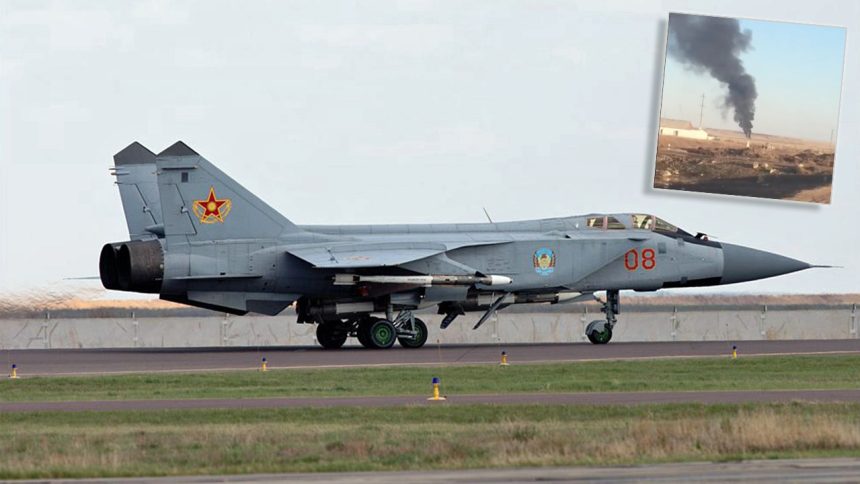Crew Reported to Have Survived, But Specific Status Unreported.
A Kazakh Air Defense Forces MiG-31 interceptor was captured on video as it burned just before crashing in a rural area of Karaganda, Kazakhstan. Both crew members are reported to have ejected, although their specific medical status has not been reported. Additional video showed smoke plumes from the aircraft’s impact.
The videos by several witnesses suggest some type of engine failure contributing to the fire, although no official cause for the crash has been reported.
The Kazakh Air Defense Forces reportedly employ between 21 to 32 of the large, legacy MiG-31 interceptors, NATO reporting name “Foxhound”, although it is unknown how many remain operational. In 2007, Russian aircraft manufacturer RSK-MiG signed a $60M USD contract to upgrade ten of the Kazak MiG-31s to MiG-31BM standard, enabling the aircraft to carry more advanced, radar-guided air-to-air missiles such as the R-77 and R-33 missiles. It is unknown how successful the upgrade program was or if the aircraft involved in this week’s crash was part of the program.
The aircraft involved in this week’s crash was operated from the 610th Air Base at Sary-Arka Airport in Karaganda, in the northeastern region of Kazakhstan.
First flown in 1975, the MiG-31 Foxhound is a replacement for the similarly configured MiG-25 Foxbat, a high-speed, high-altitude interceptor originally conceived in response the U.S. XB-70 Valkyrie Mach 3+ strategic bomber that never entered service. The Foxbat achieved notoriety on September 6, 1976, when Russian pilot Viktor Belenko defected to Japan with a MiG-25.
Russia has recently upgraded their MiG-31 fleet with new capabilities that include hypersonic missiles and even a small satellite launch capability that was tested.









